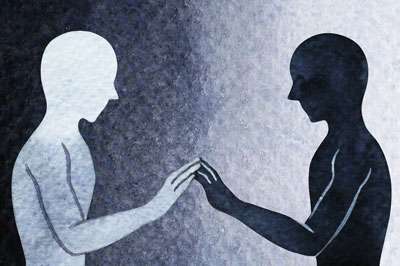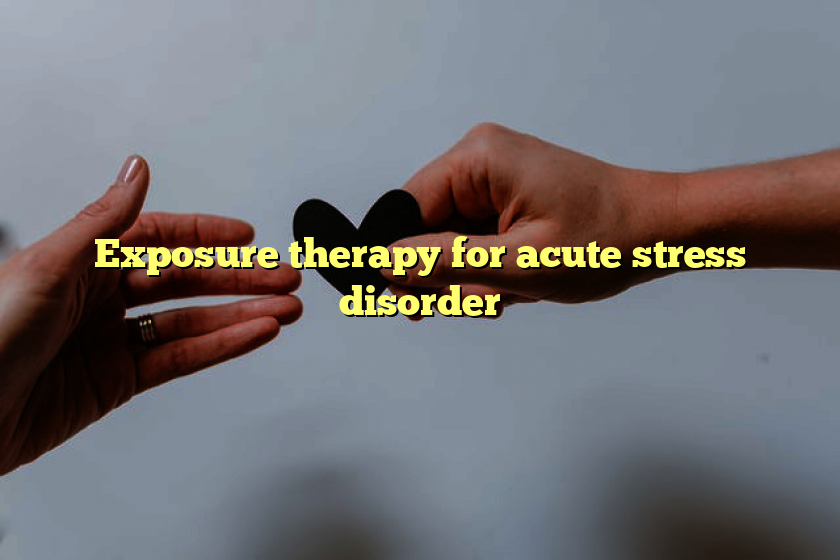Over the years–across workshops, lectures and informal discussions–a number of common questions have been asked about relational depth. In the second edition of Working at relational depth in counselling and psychotherapy, due out later this month, I’ve tried to provide some answers to them.
What is relational depth?
It’s a state of profound contact and engagement between people.
So is that something that happens at specific moments, or an ongoing quality of a relationship?
Both. ‘Relational depth’ can refer to particular moments of in-depth encounter (e.g., ‘There was a real instance of relational depth with my client today’); and it can also refer to a relationship in which there is an ongoing depth of connection (e.g., ‘There’s a relational depth between my client and I’). This is like the distinction between an ‘intimate interaction’ and an ongoing ‘intimate relationship’. Of course, moments of relational depth can be considered the ‘essential building blocks’ of a deep relationship, but they are not the whole thing. For instance, you may feel deeply connected to someone even though you hardly ever see them. Likewise, it’s possible to have very intense moments of connection with someone without ever forming a deep, ongoing closeness.
Are moments of relational depth distinctive from ‘everyday experiencing’, or is there a continuum from shallower to deeper relating?
The question here is whether experiences of relational depth are a threshold phenomenon (like being pregnant, where there is only ‘yes’ or ‘no’), or a gradient phenomenon (like hunger, where you can have more or less of it on a continuum). We tend to talk about moments of relational depth as discrete, threshold phenomenon. However, what research there is suggests that it is probably closer to a gradient phenomenon. When people are asked, for instance, to rate the depth of relating at particular moments, there is a smooth continuum from deeper to shallower rating, rather than a discrete cut-off between in-depth moments and all the others. What we term moments of ‘relational depth’, then, could probably be more accurately described as moments when the strength of relating is particularly deep. However, these moments of very deep relating seem to be so powerful and memorable that people often remember them as discrete, threshold-like events.
Is relational depth only relevant to therapy?
No. It can probably be experienced in all walks of life: and particularly with partners and friends.
And what about in groups? Can you have ‘group relational depth’?
Yes, and Wyatt has researched and written about this. However, in this book we focus primarily on relational depth in the one-to-one therapeutic encounter.
Can relational depth happen in short term therapy?
As the client study of Dominic (Chapter 5 of the book) suggests, yes. However, research also shows that, the longer the therapeutic relationship, the more likely it is that there will be moments of in-depth connection.
Does relational depth only happen in person-centred therapy?
No. Research shows, for instance, that clients in cognitive analytic therapy also experience relational depth; as do therapists and clients in many other orientations. Relational depth, then, can be considered a ‘common factor’ across a range of therapies.
Ok, but does ‘relational depth’ really say anything new? Isn’t it all there is Rogers’s writings anyway?
Yes and no. As Steve Cox rightly puts it, the concept of relational depth is inherent in Rogers, but what we have tried to do is to offer a language and a foundation that ‘firms up previously held ideas about relational interactions’.
So is a ‘relational depth’ therapy any different from ‘usual’ person-centred therapy?
It depends what you mean by ’usual’. These days, as we said above, most people would agree that there isn’t any one, standard person-centred therapy: it’s a diverse nation with many different ‘tribes’.
However, if what you mean by ‘usual’ is a classical, non-directive approach, then a ‘relational depth-informed’ approach is a bit different. With the latter, there’s a particular emphasis on meeting clients in a two-way, interpersonal dialogue; as opposed to primarily providing for clients a more one-way, reflective space. So, for instance, therapists might be more likely to draw on their own experiences and perceptions: becoming a distinctive ‘other’ to their clients. Similarly, rather than wholly focusing the work around a non-directive, ‘empathic understanding response process’ , therapists might engage with their clients in a variety of different ways. For instance, they might ask questions, probe, suggest exercises, and maybe even offer advice: whatever is seen as having the potential to deepen the level of relational engagement. In addition, because of its focus on genuine human interaction and affirmation, a relational depth-informed therapy might move beyond a ‘non-judgemental “acceptance” of the client to a more active, intentional prizing of their being-in-the-world: not just a “however they experience the world is fine,” but a deliberate affirmation of their being in all its uniqueness’. In Chapter 1 of the new edition of Working at relational depth, we will see how these differences can be traced back to subtly different assumptions about human beings’ relational needs.
But you can’t make relational depth happen, can you?
No, you can’t. Partly because it requires two people to make it happen; partly because you can’t relate deeply to someone if you’re trying to do something to them; and partly because clients are likely to ‘push back’ if they feel pressurised or manipulated. But, as a therapist, you may be able to create the conditions when relational depth is more likely to be reached, and that is the focus of our book.
Does relational depth need words?
No. As you will see in Working at relational depth, some of the most powerful experiences of relational depth can happen non-verbally.
Just because one person is experiencing relational depth, does that mean the other one is too?
Research suggests that experiences of relational depth can be shared, but that is not always the case. In fact, Rooney found that only about one in three moments of deep connection, as identified by clients, were also identified as such by the therapist. On the other hand, I found about 45% overlap between clients’ and therapists’ ratings of the depth of connection. What this suggests is that, when therapists are experiencing relational depth with their clients, it is more likely that clients will be experiencing this too, but there is no guarantee that this will be the case.
Surely it would be too much if people were relating at depth all the time?
Yes–agreed. Buber, the existential philosopher, says that we will always move in and out of deep relating (what he calls the ‘I-Thou’ stance), and that we need to have that distance in our lives as well as the closeness. But if we do not have any experiences of relational depth, that is where problems can start.
But isn’t there a downside to relational depth? For instance, couldn’t it make clients overly-dependent?
Findings here are mixed. Therapists and clients nearly always describe experiences of relational depth in positive terms. However, there are some studies which suggest that feelings of vulnerability, anxiety or pain can be associated with that depth of connection. In addition, one study found that, in about a third of clients, an in-depth therapeutic relationship had some negative consequences. In particular, clients were left wanting more from their therapists, and perceived their therapists as being withholding . This is consistent with evidence that, in unhelpful therapeutic relationship, clients can feel ‘relationally abandoned’ by their therapists . However, the findings of McMillan and McLeod have not been replicated; and it may be that such experiences are more the consequence of relational depth not being fully realised, or potential precursors to this experiencing, rather than aspects of relational depth, per se. Nevertheless, more research and scholarship is needed here to understand this ‘shadow side’ of deep encounter.
Audio book out now.
Eagerly awaited by many counsellors and psychotherapists, this new edition includes an updated preface, new content on recent research and new developments and debates around relational depth, and new case studies.
This groundbreaking text goes to the very heart of the therapeutic meeting between therapist and client. Focusing on the concept of ‘relational depth’, the authors describe a form of encounter in which therapist and client experience profound feelings of contact and engagement with each other, and in which the client has an opportunity to explore whatever is experienced as most fundamental to her or his existence. The book has helped thousands of trainees and practitioners understand how to facilitate a relationally-deep encounter, identify the personal ‘blocks’ that may be encountered along the way, and consider new therapeutic concepts – such as ‘holistic listening’ – that help them to meet their clients at this level.
This classic text remains a source of fresh thinking and stimulating ideas about the therapeutic encounter which is relevant to trainees and practitioners of all orientations.
18 Jul 2018 | for counsellors | by Bill, writer at UK & Ireland Counsellor Directory

The concept of Relational Depth is a development from Carl Rogers’ work in person-centred counselling and the core conditions of counsellor authenticity, empathic understanding and client acceptance, as some of the necessary and sufficient conditions for therapeutic change.
But where Roger’s approach focussed on providing those conditions for the client, Relational Depth emphasises the shared experience, the I-Thou encounter that the relationship embodies.
A definition
Therapists Dave Mearns and Mick Cooper, in their book “Working at Relational Depth in Counselling and Psychotherapy” explain it as follows:
“A feeling of profound contact and engagement with a client, in which one simultaneously experiences high and consistent levels of empathy and acceptance towards that Other, and relates to them in a highly transparent way. In this relationship, the client is experienced as acknowledging one’s empathy, acceptance and congruence – either implicitly or explicitly – and is experienced as fully real.”
The Role of Self-Disclosure
Working at relational depth doesn’t necessarily mean disclosing more to the client about one’s personal life but it does require the therapist to have courage to be more open and honest about their experience of the relationship, and its effect on them personally, than they might be otherwise.
Some characteristics:
- A strong sense of therapist acceptance, empathic understanding, and congruence;
- A letting-go by the therapist of goals and techniques – maintaining an awareness of their aims and goals, but not focussed on furthering them in the moment;
- A focus on the client in the here and now;
- The therapist’s openness to admitting how they are affected by the client and by the relationship;
- The therapist’s willingness to explore the relationship and to share how it affects them
The reality in the counselling room
As a therapist, there can be a risk of getting caught up in concerns over whether one is “in”or “out” of this way or working, or to feel inadequate in comparison with the more profound examples of this state in the literature.
But in practice it’s usually more practical to think of it from moment-to-moment as a way of being-in-relationship that may be less or more present, and to keep in mind that it’s something that can only be co-created with the client. One can only create the conditions in which it might arise, and trust to providence.
Working this way can be daunting for practitioners, as it means entering more fully into the relationship, but therapists who do so tend to report that the therapeutic work feels more powerful.
Hiding behind the role
The reverse situation is the temptation is to hide behind the “therapist” façade, some reasons for which might be: fear of the client’s negative feelings towards them; defensiveness in relation to client criticism; concerns around being boundaried (although sometimes those can be rationalisations of other fears); tiredness; and the therapist being troubled by issues in their own life which may be colouring their feelings in the moment.
Some ways of working with the relationship
For therapists who adopt a relational approach as their theoretical model, often the relationship is the therapy, and this can be an overarching principle, into which diverse theoretical aspects and approaches can be subsumed.
Examples of approaches that involve a focus on the client-counsellor relationship are:
- Working with the Triangle of Insight
- Therapeutic Re-experiencing
- Exploring ‘missing links’ between the client’s statments and the relationship in the room



